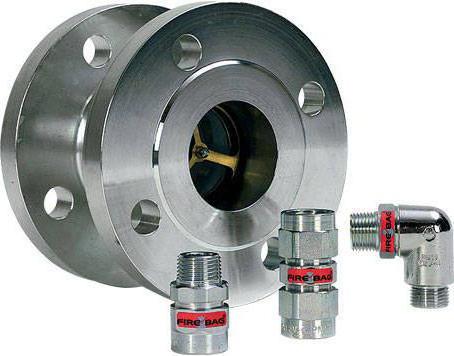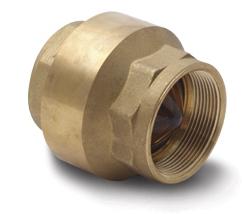Thermostatic valve: purpose, installation
On gasified facilitiesthere are systems to protect against possible gas leakage and ignition. There can be many reasons for this, and one of them is a fire in the room. The fire leads to an increase in temperature, which can reach the limit of ignition of the gas and cause it to explode. To prevent this, special valves for gas cut-off are developed in the event of a fire.

Thermostatic valve: purpose
Automatic valve type that overlapsA gas pipeline leading to all gas-powered devices during a fire is termed a thermo-lock valve. This device reduces the risk of explosions, injuries and physical destruction.
The installation of the valves of the thermo-blocking action of the KTZ is regulated by the regulations set out in the fire safety rules. They prescribe:
- Equip any types of natural gas mains, regardless of their complexity, branching and the number of consumer appliances by the systems of temperature-sensitive control and feed cut-off.
- Use as a protective device valves designed to operate when the ambient temperature reaches one hundred degrees Celsius.
- Install the thermo-locking modules at the entrance to the room.
Valves are marked in the form of a KTZ with a number after it. The number indicates what should be the diameter of the gas supply pipe to which this valve can be mounted.

Operating principle
The thermostatic valve consists of a body with a threaded connection, a fuse-link, a spring mechanism and an element (shutter) in the form of a plate or ball that closes the channel.
In the initial state at normal temperature inThe valve closing element is cocked and held by a fuse-link. In case of fire, the overall temperature rises, reaching its 85-100 degree mark leads to melting of the insert and release of the clipping mechanism. The latter in turn, under the action of the spring, blocks the gas flow channel.
The thermo-locking valve (KTZ) can work with any gases. After operation, it is replaced with a new one. It is possible to replace the fuse-link with another one and further operation of the product.

Installation Rules
In order for the valve to work reliably, it is necessary to follow the installation rules:
- Valves on the threaded connection must be installed in lines with a pressure not exceeding 0.6 MPa. Valves on the flange connection withstand pressure up to 1.6 MPa.
- The throughput of the valve should be no less than the throughput capacity of the gas line.
- It is necessary to install the thermo-shut-off valve on the gas pipeline in the first place, and then the rest of the reinforcement.
- KTZ should be installed indoors and protect the valve, not designed for large heat.
- The valve axis can be located in any direction.
- Consider the flow of gas, the direction of which is indicated on the body of the device.
- Installation of the valve in places close to heating elements, the air temperature near which can exceed 53 degrees, is excluded.
- The integrated thermo-lock valve must be checked for leaks.
- After installing the CTZ, it should not be exerted by additional pipe pressure, bending or twisting the device.
- Access to the valve should be free and not cluttered.
Conclusion
When buying a heat shut-off valveVerify that the channel cut-off mechanism has worked, which sometimes happens during transport. With complicated gas distribution inside the premises and the presence of several fuel consumers located in different parts of the building, it is recommended to install several shut-off valves on each branch.








